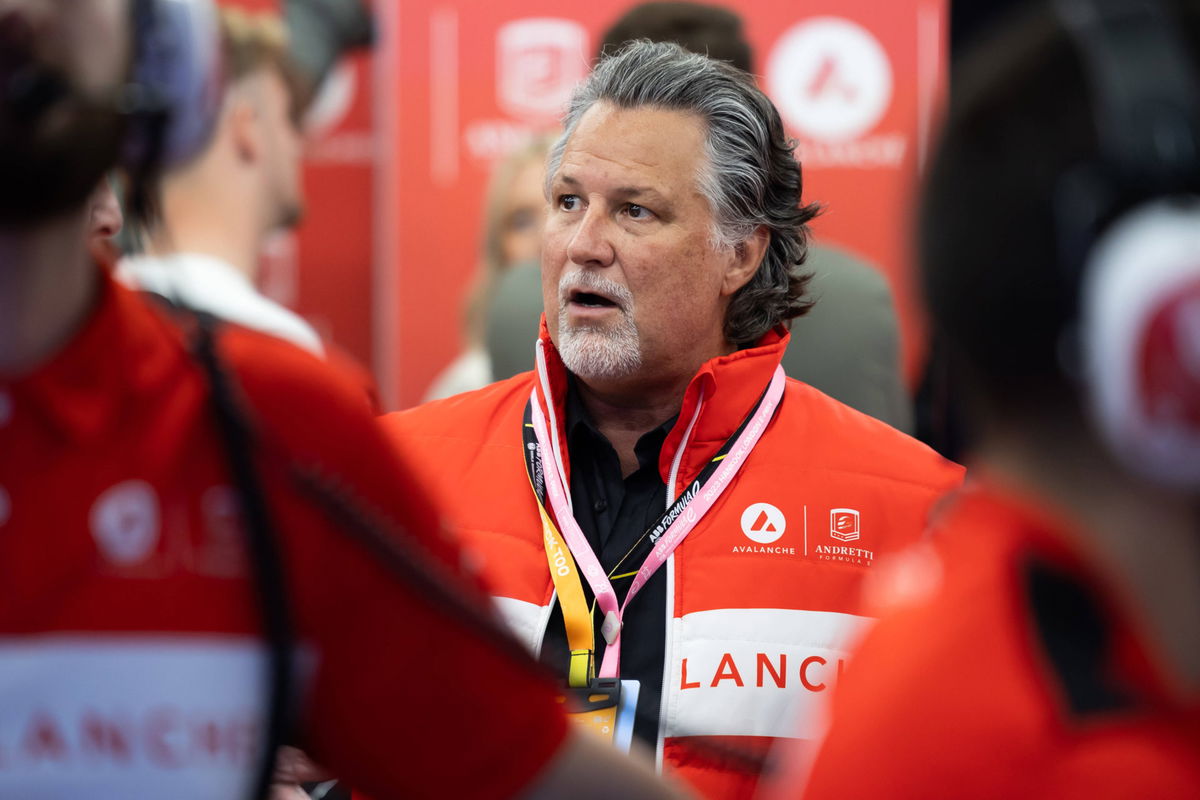
Imago
ANDRETTI Michael usa, team Owner of Andretti Motorsport, portrait during the 2023 Hankook London ePrix, 12th meeting of the 2022-23 ABB FIA Formula E World Championship, WM, Weltmeisterschaft on the ExCeL London from July 29 to 30, 2023 in London, United Kingdom – AUTO – 2023 FORMULA E HANKOOK LONDON ePRIX DPPI/Panoramic PUBLICATIONxNOTxINxFRAxBEL AF1_8435

Imago
ANDRETTI Michael usa, team Owner of Andretti Motorsport, portrait during the 2023 Hankook London ePrix, 12th meeting of the 2022-23 ABB FIA Formula E World Championship, WM, Weltmeisterschaft on the ExCeL London from July 29 to 30, 2023 in London, United Kingdom – AUTO – 2023 FORMULA E HANKOOK LONDON ePRIX DPPI/Panoramic PUBLICATIONxNOTxINxFRAxBEL AF1_8435
“It is not a fun period.” – That’s what the Alpine boss, Bruno Famin said about the team’s performance so far in 2024. However, he has made it clear that the team is here to stay in Formula 1. And that could mean a big blow for the entry of the Andretti team in F1 considering that the existing teams and Formula 1 are pushing for critical changes in the latest Concorde Agreement.
Watch What’s Trending Now!
Michael Andretti has already made a massive $200 million investment in the hope of entering F1 by setting up a state-of-the-art facility spanning over 575,000 square feet in Fishers, near the Nickel Plate Trail. Andretti had initially received approval from the FIA to enter the sport in 2025. However, Formula 1 declined Andretti’s bid a while ago in an official statement that cited multiple reasons for declining the entry, including that the team might not be competitive enough. But F1 still left the door open for Andretti to reapply later when they have a GM works engine in 2028.
Interestingly, Formula 1 already has an allowance for 12 teams to exist on the grid. However, recent reports have suggested that the sport and the current teams are pushing for the limit to be reduced to 10 in the upcoming Concorde Agreement. If that were to happen, Andretti would officially be unable to apply for an entry again, leaving them with the only option to acquire another team if they want to compete in F1.
ADVERTISEMENT
And due to their recent struggles, Alpine was the only realistic option if Andretti indeed wanted to acquire a team to enter F1. However, Bruno Famin has now made it clear that Alpine will continue in F1 well beyond 2026. In a recent conversation with SoyMotor.com, Famin spoke about the future of Alpine. “Alpine is not for sale,” he said. “We have a real project with Alpine. We have the project to develop the notoriety of the Alpine brand around the world through motorsport and Formula 1 in particular. We have the full support of the management. The team is not at all in sale.” [Translated by Google]
Famin confirma que "Alpine no está en venta": "Tenemos un proyecto real".
➡️ El jefe del equipo reconoce que no está siendo un "periodo divertido" y que quieren desarrollar el rendimiento del A524.
➡️ Asegura que están contentos con las decisiones tomadas de cara a los motores… pic.twitter.com/Xpz5hooM6E
— SoyMotor.com (@SoyMotor) April 15, 2024
Famin acknowledged the challenging period but remained optimistic about their ability to bounce back. They are banking on the 2026 regulation changes, which they believe will present an opportunity to reset and compete at the front of the grid once again.
ADVERTISEMENT
Why is there a push to reduce the number of teams on the grid?
While the current agreement does allow 12 teams to compete on the grid, there is a bit of a catch. Once the commercial terms had been settled in the last agreement, it was decided that any new team beyond the existing 10 teams have to pay an anti-dilution fee of $200 million. And when Andretti received the green light from the FIA last year, teams wanted to increase that amount to $600 million to make an F1 entry even more difficult. But now it seems like there won’t even be an option for an 11th or 12th team, even with a massive dilution fee.
ADVERTISEMENT
F1 seeking 10-team limit in new Concorde Agreement – report
Full story 👉 https://t.co/TQ9UqG15xi
#F1https://t.co/TQ9UqG15xi— Motorsport Week (@MotorsportWeek) April 13, 2024
Money is the obvious reason for pushing this change. You see, with Formula 1’s value on the rise since the COVID-19 pandemic, the teams have grown in value as well, with valuations reaching close to £1 billion. And while adding more teams to the grid will mean more money for the sport itself, there will be more teams to split the money into, meaning less for everyone. Hence, the push to reduce the number of teams to 10 so that the only way a new entity enters the sport is by acquiring an existing team.
Do you think having more cars on the grid will make the modern era of the sport more exciting? Or is 10 a good number for Formula 1? Share your insights in the comments down below.
ADVERTISEMENT
ADVERTISEMENT
ADVERTISEMENT
ADVERTISEMENT

